
Introduction of Xanax
Xanax is a brand name for the medication alprazolam, which belongs to a class of drugs called benzodiazepines. It’s commonly prescribed to treat anxiety disorders, panic disorders, and occasionally for certain types of depression. Xanax works by enhancing the effects of a neurotransmitter called gamma-aminobutyric acid (GABA) in the brain, which helps to produce a calming effect.
While Xanax can be effective for managing anxiety symptoms, it also has a high potential for abuse and dependence. It’s classified as a Schedule IV controlled substance in the United States due to its addictive properties. Misuse of Xanax can lead to tolerance, dependence, and addiction, especially when taken in higher doses or for longer periods than prescribed.
The Clinical Utility of Xanax
The clinical utility of Xanax, or alprazolam, lies primarily in its ability to provide short-term relief for individuals with anxiety disorders and panic disorders. When used appropriately and under the guidance of a healthcare provider, Xanax can effectively alleviate symptoms such as excessive worry, tension, nervousness, and panic attacks.
Xanax works relatively quickly, often producing calming effects within an hour of ingestion, which can be beneficial for individuals experiencing acute anxiety or panic symptoms. Its rapid onset of action makes it suitable for situations where immediate relief is needed, such as during a panic attack.
Additionally, Xanax can be helpful for managing anticipatory anxiety, which is the anxiety experienced in anticipation of a future event or situation. By reducing anxiety symptoms, Xanax may enable individuals to engage more fully in activities they would otherwise avoid due to anxiety.
However, it’s essential to recognize that Xanax is typically recommended for short-term use due to its potential for tolerance, dependence, and addiction. Prolonged use of Xanax can lead to physical and psychological dependence, as well as tolerance, meaning higher doses may be required over time to achieve the same therapeutic effect.
In clinical practice, Xanax is often prescribed as part of a comprehensive treatment plan that may include therapy (such as cognitive-behavioral therapy), lifestyle modifications, and other medications, depending on the individual’s needs and the severity of their symptoms.
Overall, while Xanax can be a valuable tool for managing acute anxiety and panic symptoms when used judiciously and as part of a broader treatment approach, it’s essential to weigh its benefits against the potential risks of dependence and misuse. Close monitoring by a healthcare provider is crucial to ensure its safe and effective use.
Benefit of Xanax in Social Anxiety Disorder
Xanax, or alprazolam, can offer some benefits in managing symptoms of Social Anxiety Disorder (SAD), though it’s not typically considered a first-line treatment due to concerns about its potential for dependence and misuse. Here are some ways in which Xanax may be helpful for individuals with SAD:
- Rapid Relief of Acute Symptoms: Xanax has a quick onset of action, often providing rapid relief from acute anxiety symptoms associated with social situations. This can be particularly beneficial for individuals facing immediate stressors or triggers, such as public speaking or attending social events.
- Reduced Physical Symptoms: Social Anxiety Disorder can manifest with physical symptoms like trembling, sweating, rapid heartbeat, and nausea. Xanax’s calming effects may help alleviate these physical manifestations of anxiety, making social interactions more tolerable for individuals with SAD.
- Short-Term Management: Xanax may be used on an as-needed basis to manage acute episodes of anxiety in social situations. For some individuals with SAD, knowing they have a medication to help them cope with particularly challenging situations can provide a sense of reassurance and increased confidence.
However, it’s important to note that while Xanax can offer temporary relief, it’s not a long-term solution for Social Anxiety Disorder. In fact, its potential for dependence and tolerance means that extended use can lead to worsening symptoms and increased risk of addiction.
Additionally, Xanax does not address the underlying causes of Social Anxiety Disorder or provide individuals with the skills and strategies needed to manage anxiety in the long term. Therefore, it’s typically recommended as a short-term intervention or adjunct to other treatments, such as therapy (such as cognitive-behavioral therapy), which focuses on addressing the root causes of anxiety and developing coping mechanisms for managing social situations more effectively.
Use of Xanax
Xanax, or alprazolam, is primarily prescribed for the management of anxiety disorders, panic disorders, and occasionally for certain types of depression. Here are some common uses of Xanax:
- Anxiety Disorders: Xanax is often prescribed to alleviate symptoms of generalized anxiety disorder (GAD), which involves excessive worry and tension about everyday events or activities. It may also be used to treat other anxiety disorders, such as social anxiety disorder (SAD) or specific phobias, particularly in situations where immediate relief is needed.
- Panic Disorders: Xanax is effective in reducing the frequency and severity of panic attacks, which are sudden episodes of intense fear or discomfort accompanied by physical symptoms such as rapid heartbeat, sweating, trembling, and shortness of breath. It can help individuals manage acute panic symptoms and may be used on an as-needed basis or as part of a longer-term treatment plan.
- Insomnia Related to Anxiety: In some cases, Xanax may be prescribed for short-term relief of insomnia caused by anxiety or stress. Its sedative effects can help individuals with anxiety-related sleep disturbances fall asleep more easily and improve sleep quality.
- Adjunctive Treatment: Xanax may be used as an adjunctive treatment alongside other medications or therapies for mental health conditions. For example, it may be prescribed along with an antidepressant medication for individuals with co-occurring anxiety and depression.
- Preoperative Anxiety: Xanax may be used prior to certain medical procedures or surgeries to help alleviate preoperative anxiety and promote relaxation.
It’s important to note that Xanax is typically recommended for short-term use due to its potential for tolerance, dependence, and addiction. Prolonged use of Xanax can lead to physical and psychological dependence, as well as withdrawal symptoms upon discontinuation. Healthcare providers usually prescribe Xanax at the lowest effective dose for the shortest duration necessary to manage symptoms safely.
Enhancing Mental Health with Xanax
Using Xanax specifically for enhancing mental health is a controversial topic due to its potential for dependence, tolerance, and addiction. While Xanax can provide short-term relief from symptoms of anxiety and panic, its use for enhancing overall mental health is limited and should be approached with caution. Here are some considerations:
- Short-Term Relief: Xanax may offer temporary relief from acute symptoms of anxiety or panic, which can improve mood and overall sense of well-being in the short term. This can be beneficial for individuals experiencing overwhelming anxiety or panic attacks.
- Symptom Management: By reducing symptoms of anxiety or panic, Xanax may help individuals function better in their daily lives and engage in activities they find challenging due to their mental health condition.
- Improved Functioning: For some individuals with severe anxiety or panic disorders, the short-term use of Xanax may help them function more effectively at work, school, or in social situations by reducing debilitating symptoms.
- Adjunct to Therapy: In some cases, Xanax may be used as an adjunct to therapy, especially when symptoms are severe and interfere with participation in therapy sessions. It can help individuals manage acute symptoms while they work on developing coping skills and addressing underlying issues in therapy.
- Crisis Management: Xanax may be prescribed in crisis situations to provide immediate relief for individuals experiencing severe anxiety or panic attacks. This can help stabilize the individual and prevent the escalation of symptoms.
However, it’s crucial to emphasize that Xanax is not a long-term solution for enhancing mental health. Its use should be limited to short-term relief of acute symptoms and should be closely monitored by a healthcare provider. Long-term use of Xanax can lead to dependence, tolerance, withdrawal symptoms, and potential addiction, which can worsen mental health outcomes in the long run.
Risks of Xanax in Panic Disorder Treatment
While Xanax can be effective in managing symptoms of panic disorder, it comes with several risks that need to be carefully considered when using it as part of a treatment plan:
- Risk of Dependence: Xanax has a high potential for dependence, meaning individuals can develop a reliance on the medication to manage their symptoms. Dependence can lead to withdrawal symptoms when the medication is stopped, and it may perpetuate a cycle of needing higher doses to achieve the same effect.
- Tolerance: Over time, individuals may develop a tolerance to Xanax, meaning they require higher doses to achieve the same level of symptom relief. This can increase the risk of dependence and other adverse effects associated with higher doses of the medication.
- Addiction: Xanax is classified as a controlled substance due to its potential for addiction. Misuse of Xanax, such as taking it in higher doses or more frequently than prescribed, can lead to addiction, characterized by compulsive drug-seeking behavior despite negative consequences.
- Withdrawal Symptoms: Abrupt discontinuation of Xanax can lead to withdrawal symptoms, which may include rebound anxiety, agitation, insomnia, tremors, sweating, and seizures in severe cases. Tapering off the medication under medical supervision is usually necessary to minimize withdrawal symptoms.
- Cognitive Impairment: Xanax can cause cognitive impairment, including drowsiness, confusion, and impaired coordination. These effects can impact daily functioning and increase the risk of accidents, especially when driving or operating machinery.
- Drug Interactions: Xanax can interact with other medications, especially other central nervous system depressants such as alcohol, opioids, and certain antidepressants. These interactions can potentiate the sedative effects of Xanax and increase the risk of respiratory depression and overdose.
- Masking Underlying Issues: While Xanax can provide symptomatic relief, it does not address the underlying causes of panic disorder. Relying solely on medication may mask underlying psychological issues that could benefit from therapy or other forms of treatment.
Given these risks, healthcare providers typically prescribe Xanax for panic disorder cautiously and for short-term use, often in combination with other treatments such as therapy or antidepressant medications. Close monitoring and regular follow-up with a healthcare provider are essential to ensure the safe and effective use of Xanax in panic disorder treatment.
Managing Anxiety with Xanax
Xanax (alprazolam) can be used to manage anxiety symptoms, including those associated with various anxiety disorders. Here’s how it can be utilized in managing anxiety:
- Short-Term Relief: Xanax is often prescribed for short-term relief of acute anxiety symptoms. It works relatively quickly, often producing calming effects within 30 minutes to an hour after ingestion. This rapid onset of action can be beneficial for individuals experiencing acute anxiety or panic attacks.
- Symptom Management: Xanax can help alleviate symptoms such as excessive worry, tension, nervousness, and physical manifestations of anxiety, such as rapid heartbeat and sweating. By reducing these symptoms, Xanax can help individuals feel more comfortable and function better in their daily lives.
- Crisis Intervention: In situations where anxiety symptoms are severe or disabling, Xanax may be used as a crisis intervention to provide immediate relief and help stabilize the individual. This can prevent the escalation of symptoms and alleviate distress during acute episodes of anxiety or panic.
- Adjunctive Treatment: Xanax may be used as an adjunctive treatment alongside other interventions, such as therapy (e.g., cognitive-behavioral therapy) or lifestyle modifications, to manage anxiety more effectively. It can help individuals manage acute symptoms while they work on developing coping skills and addressing underlying issues in therapy.
- As-Needed Use: Xanax is often prescribed on an as-needed basis, meaning individuals take it only when they experience significant anxiety symptoms or anticipate anxiety-provoking situations. This approach allows for flexibility in medication use and minimizes the risk of dependence and tolerance associated with daily use.
However, it’s essential to use Xanax cautiously and under the guidance of a healthcare provider due to its potential for dependence, tolerance, and addiction. Long-term use of Xanax is generally not recommended, and healthcare providers typically prescribe it at the lowest effective dose for the shortest duration necessary to manage symptoms safely.
Conclusion
After taking Xanax for a period of time, it’s important to consider how you want to wrap things up with the medication. One option is to slowly taper off your dose under the guidance of a healthcare provider to minimize withdrawal symptoms. It’s crucial not to stop Xanax suddenly, as this can lead to uncomfortable and potentially dangerous side effects like seizures. Another choice is to discuss alternative medications or therapies with your doctor that may be more suitable for long-term anxiety management. Additionally, implementing lifestyle changes such as exercise, healthy eating, and stress-reducing activities can complement your treatment plan post-Xanax.
Written by admin
Latest Offer
USE COUPON CODE
MEDS10
Products Categories
-
 Buy Adderall Online
Buy Adderall Online -
 Buy Adipex Online
Buy Adipex Online -
 Buy Alprazolam Online
Buy Alprazolam Online -
 Buy Ambien Online
Buy Ambien Online -
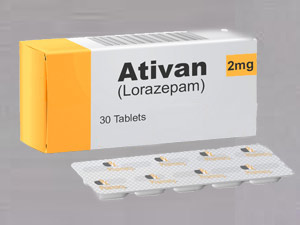 Buy Ativan Online
Buy Ativan Online -
 Buy Carisoprodol Online
Buy Carisoprodol Online -
 Buy Clonazepam Online
Buy Clonazepam Online -
 Buy Codeine Online
Buy Codeine Online -
 Buy Darvocet Online
Buy Darvocet Online -
 Buy Demerol Online
Buy Demerol Online -
 Buy Diazepam Online
Buy Diazepam Online -
 Buy Dilaudid Online
Buy Dilaudid Online -
 Buy Fioricet Online
Buy Fioricet Online -
 Buy Hydrocodone Online
Buy Hydrocodone Online -
 Buy Hydromorphone Online
Buy Hydromorphone Online -
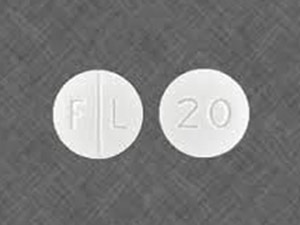 Buy Lexapro Online
Buy Lexapro Online -
 Buy Lorazepam Online
Buy Lorazepam Online -
 Buy Lorcet Online
Buy Lorcet Online -
 Buy Lortab Online
Buy Lortab Online -
 Buy Meridia Online
Buy Meridia Online -
 Buy Methadone Online
Buy Methadone Online -
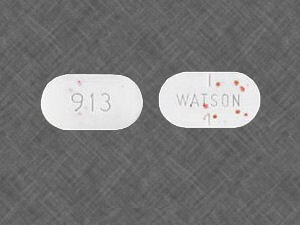 Buy Norco Online
Buy Norco Online -
 Buy Opana ER Online
Buy Opana ER Online -
 Buy Oxycodone Online
Buy Oxycodone Online -
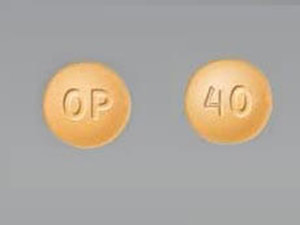 Buy Oxycontin Online
Buy Oxycontin Online -
 Buy Percocet Online
Buy Percocet Online -
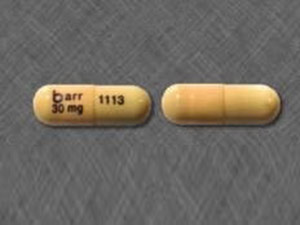 Buy Phentermine Online
Buy Phentermine Online -
 Buy Roxicodone Online
Buy Roxicodone Online -
 Buy Soma Online
Buy Soma Online -
 Buy Suboxone Online
Buy Suboxone Online -
 Buy Subutex Online
Buy Subutex Online -
 Buy Tramadol Online
Buy Tramadol Online -
 Buy Valium Online
Buy Valium Online -
 Buy Viagra Online
Buy Viagra Online -
 Buy Vicodin Online
Buy Vicodin Online -
 Buy Vyvanse Online
Buy Vyvanse Online -
 Buy Xanax Online
Buy Xanax Online

Leave a Reply